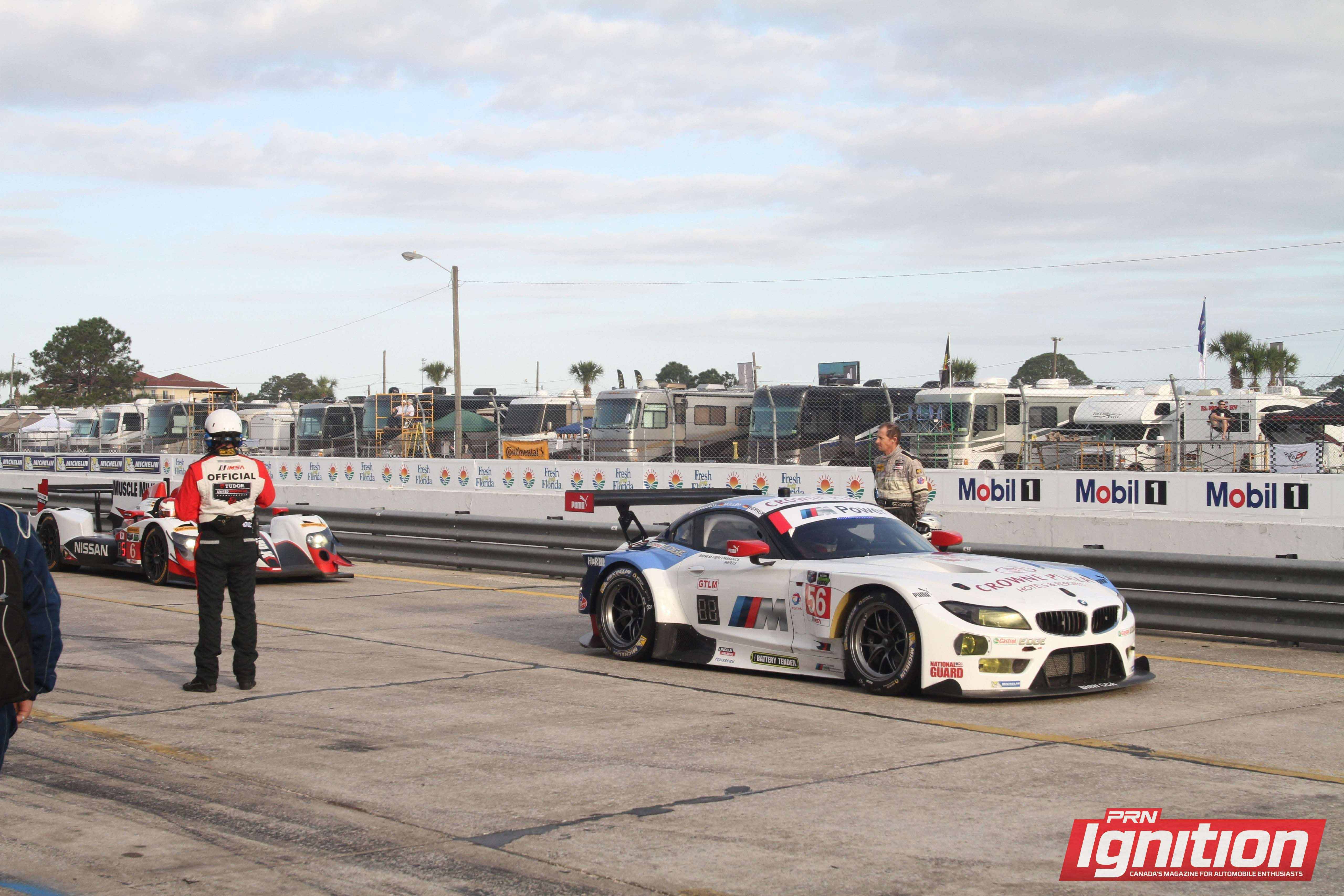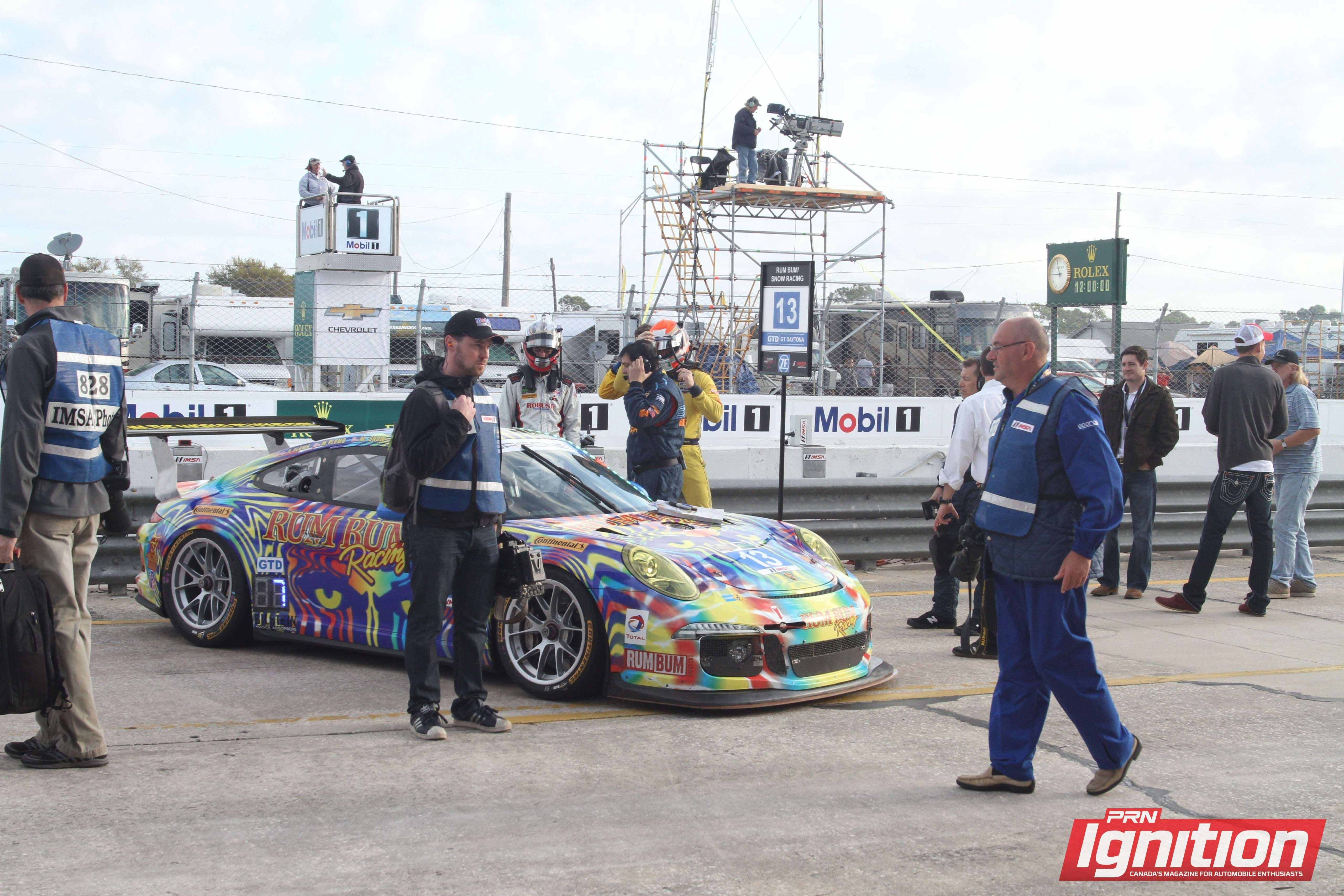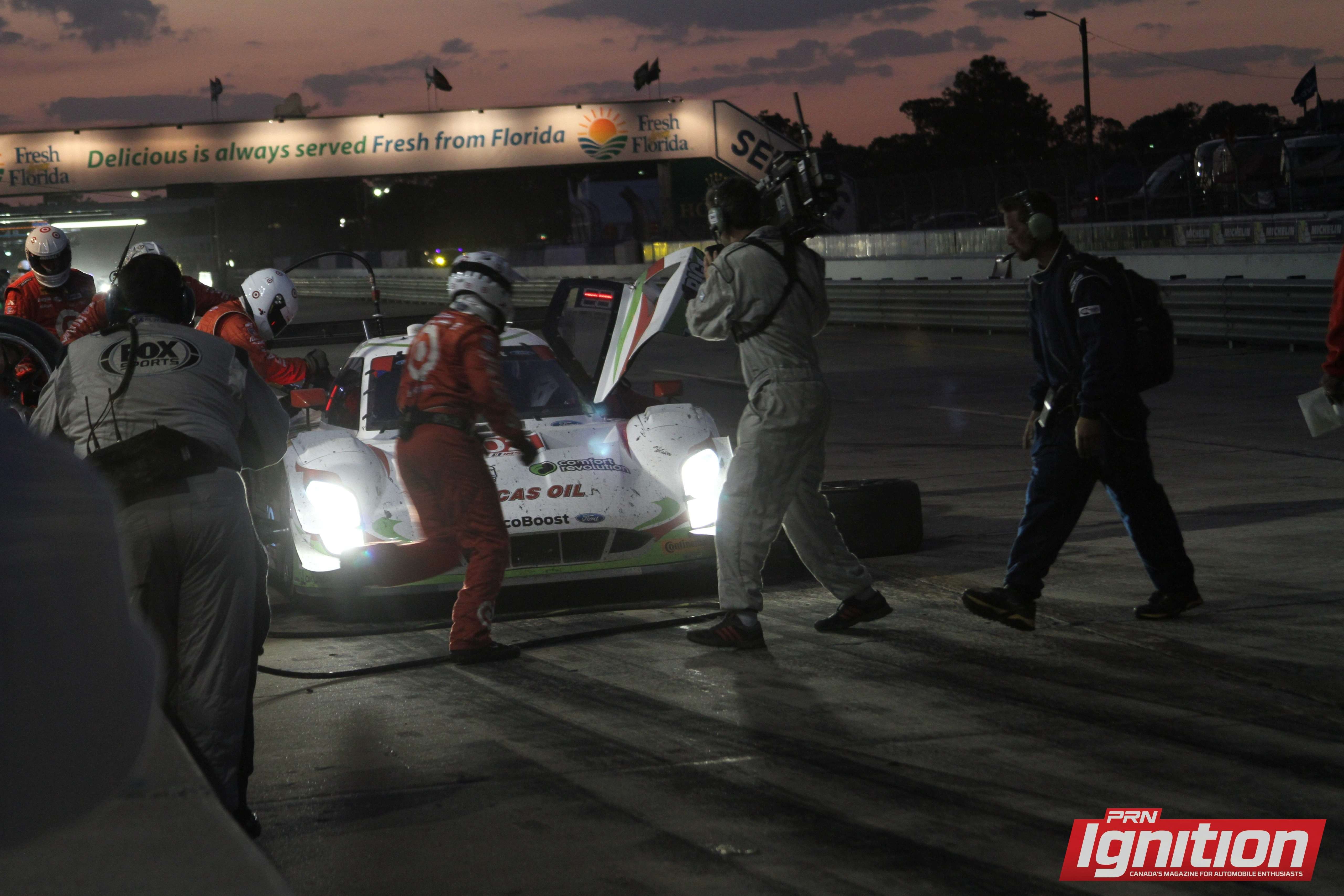
This year I was able to attend the Sebring 12-hour race for only my second time ever, the previous visit having come in 1996, nearly 20 years ago. I was looking forward to seeing this race at the legendary Sebring circuit. And I was anxious to see how the new TUSC (Tudor Unified SportsCar Championship), an amalgamation of the former Grand-Am and ALMS series, was working out.
In Part #1, I talked about the race – and that was the “good” part of my comments. Unfortunately, there were a number of fundamental things here that I would rate under the “bad” or “ugly” category. The rejuvenated IMSA needs to seriously address some of these shortcomings if it is to go forward as the credible series of sports car racing in America.
Bad Number One: Incompetent track management
The most obvious evidence of this came mid-race when race officials incorrectly assessed a stop-and-go PLUS 80 second penalty on the No. 22 GTD Alex Job Porsche. This resulted in the car finishing fourth in class when it should have been the winner. Afterwards – but long before the race ended -- Scot Elkins, IMSA VP of Competition, admitted that an error had been made but claimed that nothing could be done to fix it.
The outcome of this was that while the Alex Job car was robbed of its GTD class win, the No. 912 factory GTLM Porsche – which was the offending car – was never penalized and it was left to win its class.
 This was the most obvious and egregious mistake. In the old days, we used to hold a stewards meeting after the race and assign any penalties after the fact based on a careful review of all the evidence, including evidence from the competitors involved. If you are going to take the NASCAR approach of assigning penalties on the fly which are near impossible to unwind later you had better be next to perfect in all your calls. Obviously IMSA management currently does not meet this standard.
This was the most obvious and egregious mistake. In the old days, we used to hold a stewards meeting after the race and assign any penalties after the fact based on a careful review of all the evidence, including evidence from the competitors involved. If you are going to take the NASCAR approach of assigning penalties on the fly which are near impossible to unwind later you had better be next to perfect in all your calls. Obviously IMSA management currently does not meet this standard.
Not surprisingly, many experienced observers are calling for the heads of Elkins and/or Paul Walter, IMSA’s race director.
Everyone noticed that we saw about five hours of full-course-yellows in the 12-hour race. It looked to me like the new organization had decided to press gang local operatives as track clean-up workers – the crash trucks and tow trucks etc. (this doesn’t refer to the flaggers/corner workers who are limited to a communications role). NASCAR follows this policy of using locals for track workers but they seem to get away with it because they have a long-standing continuity of using mostly the same people from year to year and by using the same people at more than just one track – which helps build them into an experienced, functioning crew. Sebring, as a road course, is petty much isolated from other road courses and it only runs one event a year. For all appearances, it looked like the crash-workers-for-a-day had little understanding of how they were supposed to attend to a crash and get it cleaned up and the racing going again.
And it looked to me like the equipment they had was not well suited to the task at hand - being more suited to fighting grass fires in the swamp and picking up cars along the highway. I’m sure that this contributed to the long yellows. And I’m not convinced that, had there been a competent crash rescue operation that the Viper couldn’t have been saved; instead it was allowed to burn to a crisp while the workers on hand fiddled around ineffectively. Fortunately, the driver had been able to get out on his own – long before any rescue workers ever showed up on the scene.
If a race organization cannot run its races in a consistently competent and safe manner, they shouldn’t be in the business.
Bad Number Two: Too much time wasted on “cautions”
 Everyone come to a race to see racing. This race is another horrible example of a race that was ruined by cautions – five hours of the 12-hour race. On one hand it screws up the competition, making the results much of a lottery dependent on where you were when the yellow flew and how many times you got back on the lead, And, of course, the paying spectators were left watching a slow procession of cars coming around the track for hour after hour.
Everyone come to a race to see racing. This race is another horrible example of a race that was ruined by cautions – five hours of the 12-hour race. On one hand it screws up the competition, making the results much of a lottery dependent on where you were when the yellow flew and how many times you got back on the lead, And, of course, the paying spectators were left watching a slow procession of cars coming around the track for hour after hour.
IMSA, like all race organizations that run road races, should make finding ways to reduce the number of full-course-cautions and reducing the length of the ones that do happen a major priority. Many people are recalling that in the “old days” we used to use local yellows a lot of the time. Surely with good signalling to indicate the start of the “local yellow” zone and, perhaps, radar guns to enforce reasonable speed limits in the local yellow zone, we could eliminate many of these full-course yellows for a single piece of debris and such.
IMSA has a seems to have a practice of waiting until the incident is cleaned up before opening the pits and then taking two yellow-flag laps for first the Prototypes and then the GT cars to make pit stops. I wonder if perhaps it wouldn’t make things go a lot faster if they simply never opened the pits during a full-course-caution and left it to the teams to make their pit stops under green. If a car is forced to pit under yellow, compensate by giving them a stop-and-go plus 30 second penalty after the track goes green again. I think that the elimination of mass pit stops under yellow could shorten up many of the now-endless cautions to good effect.
Bad Number Three: Sebring is just another ugly old airfield circuit.
 I got started in the 1950s on ex-WWII airfield circuits – Edenvale, Green Acres, Harewood – but they have all been retired for decades. Sebring is still much like the crude runway-style circuit that first hosted races back in 1950. Little has changed since that time. It may be historic but it’s still a barren, flat venue out in the middle of Florida’s uninspiring flatlands. This is a place that should be retired simply because it's too dull. What could IMSA do without this place for an early season endurance race? How about COTA in Texas?
I got started in the 1950s on ex-WWII airfield circuits – Edenvale, Green Acres, Harewood – but they have all been retired for decades. Sebring is still much like the crude runway-style circuit that first hosted races back in 1950. Little has changed since that time. It may be historic but it’s still a barren, flat venue out in the middle of Florida’s uninspiring flatlands. This is a place that should be retired simply because it's too dull. What could IMSA do without this place for an early season endurance race? How about COTA in Texas?
Given that my first love is road racing, I do hope that the IMSA series, which is the only series which aspires to be the premier American pure “sports car” road racing series, does continue to prosper and that they are not derailed by the problems they are having, even after the merger which was supposed to solve the problems caused by having two rival series.
But, if they are to succeed, they need to work harder to officiate their races in a manner which is beyond criticism and they need to find a way to stage races that feature more “racing” and fewer “cautions”.






















